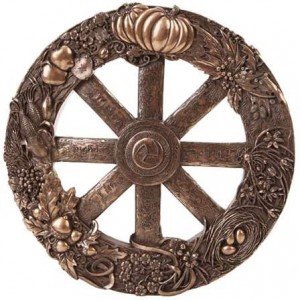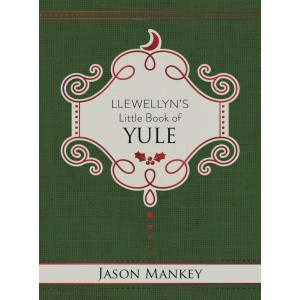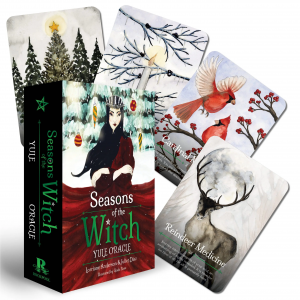Yule: The Winter Solstice Festival of Light and Rebirth
- December 12, 2024
- 1079
- 0
Yule, one of the most enduring midwinter festivals, aligns with the winter solstice, the shortest day and longest night of the year. This ancient celebration holds significance as a time to honor the rebirth of the sun, the promise of longer days ahead, and the cycles of nature. With its roots in pagan traditions and its later incorporation into Christian customs, Yule offers a fascinating tapestry of rituals, symbols, and cultural evolution.
The Winter Solstice and Its Meaning
The winter solstice, occurring in late December, has been observed by cultures worldwide for millennia. Astronomically, it marks the moment when the sun reaches its southernmost point, resulting in the least daylight. For ancient peoples, this natural turning point carried profound spiritual and practical implications. While often celebrated with rituals and symbols imbued with meaning, the solstice itself is inherently a secular event, rooted in the rhythms of nature. It was a time to celebrate the return of the light and to reaffirm hope and resilience during the depths of winter.
In the northern hemisphere, midwinter was both a challenging and celebratory time. The successful storage of food, the survival of livestock, and the ability to endure the cold months ahead were crucial. Yule, as a solstice celebration, represented gratitude for the sustenance of life and the anticipation of the sun’s return, which would eventually bring warmth and renewal to the earth.
Pagan Roots of Yule
 Yule has its origins in the pagan traditions of the Germanic peoples. The name “Yule” is derived from the Old Norse “jól” and the Old English “geól,” terms used to describe the midwinter festival. Yule was a time for feasting, merriment, and sacred rituals that acknowledged the cycles of nature and the gods associated with the season.
Yule has its origins in the pagan traditions of the Germanic peoples. The name “Yule” is derived from the Old Norse “jól” and the Old English “geól,” terms used to describe the midwinter festival. Yule was a time for feasting, merriment, and sacred rituals that acknowledged the cycles of nature and the gods associated with the season.
One of the most iconic symbols of Yule is the Yule log. In pagan practice, a massive log was chosen and ceremonially burned on the hearth, its flames symbolizing the sun and its ash kept for protection and good fortune. This ritual represented both the destruction of the old year and the light of hope for the coming year.
In Norse mythology, Yule was intertwined with the concept of the Wild Hunt, a supernatural event in which a ghostly procession, led by a god or otherworldly figure, raced across the sky. The god associated with Yule in the Norse tradition was often Odin, a figure of wisdom and power. His connection to Yule was multifaceted, encompassing themes of transformation, knowledge, and the bridging of worlds.
Evergreens, which retained their vitality through the coldest months, were revered as symbols of eternal life and resilience. Holly, ivy, and mistletoe were particularly significant, representing protection, fertility, and harmony. These plants adorned homes and altars during Yule, infusing spaces with the hope of renewal and the promise of spring.
Rituals and Festivities
The celebration of Yule involved a variety of customs designed to honor the earth, the sun, and the divine. Feasting played a central role, with tables laden with meat, bread, and ale, symbolizing abundance and communal solidarity. The slaughtering of livestock at midwinter ensured the preservation of meat during the cold months and marked an important moment of preparation for survival.
Rituals were often focused on light and fire. Bonfires, candles, and the burning of the Yule log were central acts of devotion, signifying the sun’s return. These flames were believed to carry prayers to the heavens and to cleanse and purify both homes and spirits.
Another key tradition was the practice of wassailing, a form of communal caroling and blessing. Groups would travel door-to-door, singing and offering toasts of spiced cider in exchange for gifts or good company. Wassailing also extended to the orchards, where trees were blessed to ensure a bountiful harvest in the coming year.
Christianity and the Transformation of Yule
 As Christianity spread throughout Europe, many pagan festivals were adapted and reinterpreted within a Christian framework. Yule was no exception. The celebration of the birth of Christ was placed in late December to coincide with existing solstice festivities, making the transition to Christianity more seamless for newly converted populations.
As Christianity spread throughout Europe, many pagan festivals were adapted and reinterpreted within a Christian framework. Yule was no exception. The celebration of the birth of Christ was placed in late December to coincide with existing solstice festivities, making the transition to Christianity more seamless for newly converted populations.
The Yule log, once a pagan symbol of sun worship, was incorporated into Christmas traditions. Its burning came to represent the light of Christ entering a dark world. In some regions, this custom evolved further, giving rise to the decorative and edible Yule log cakes enjoyed during holiday feasts.
Evergreens, too, retained their place in midwinter celebrations. While their pagan symbolism of eternal life persisted, Christians imbued them with new meaning, representing the everlasting love and grace of God. Holly, with its red berries and spiky leaves, was said to symbolize the blood and crown of thorns of Christ.
Feasting and communal gatherings remained central to the celebration, bridging the cultural gap between Yule and Christmas. Shared meals emphasized themes of generosity, unity, and gratitude, reflecting both pagan and Christian values.
Modern Celebrations of Yule
Today Yule is observed by a wide array of people, from modern pagans and Wiccans to those who appreciate its historical and cultural significance. Contemporary celebrations often focus on themes of light, rebirth, and connection to nature, echoing the festival’s ancient origins.
For modern pagans, Yule is one of the eight Sabbats of the Wheel of the Year, a calendar of seasonal festivals. Rituals may include the lighting of candles, the decoration of altars with evergreens, and the sharing of symbolic foods. The Yule log remains a powerful symbol, sometimes represented as a decorative centerpiece adorned with candles, holly, and ivy.
Family and community gatherings often feature storytelling, music, and the exchange of gifts, emphasizing the bonds of love and friendship. In keeping with the spirit of the season, acts of charity and kindness are also common, reflecting the shared human desire to bring light and warmth to a dark time of year.
Nature-based practices, such as solstice walks and ceremonies to honor the sun, have gained popularity among those seeking to reconnect with the rhythms of the earth. These activities provide an opportunity to reflect on the cycles of life and to set intentions for the year ahead.
The enduring appeal of Yule lies in its ability to bridge ancient and modern worlds, blending ritual, community, and the timeless human connection to the cycles of light and dark. The festival’s rich tapestry of symbols and traditions continues to inspire, offering a source of warmth and meaning in the heart of winter.
Related Posts
Magically Celebrating The New Year
- 1164
- 0
New Year's rituals are a powerful way to harness this transitional energy, creating a bridge between the past year and the one to come. Whether you're deeply rooted in a spiritual path or just beginni..
The Magic of The Spring Equinox
- 2219
- 0
We only get 2 Equinox's a year - the time when Earth is in total balance and harmony. Embrace the Spring Equinox - a time of rebirth and new beginnings.
Celebrating the Autumn Harvests
- 2062
- 0
Just as Native Americans and British colonists joined together in a feast of thanks to the deities who sustained their lives, we can also share this universal theme of the Harvest Home with others. We..
The Cailleach: Ancient Celtic Winter Goddess
- 1125
- 0
The Cailleach, revered throughout the ancient British Isles, is one of the most enigmatic and powerful figures in Celtic mythology. Known as the Winter Goddess or Divine Hag, she embodies the harsh, c..
















